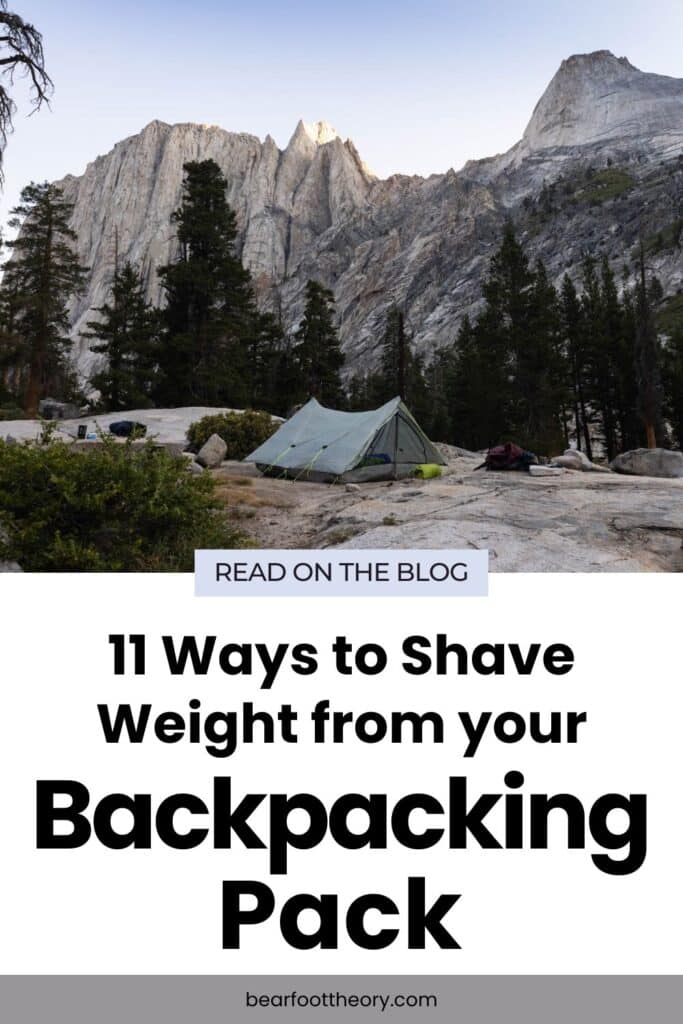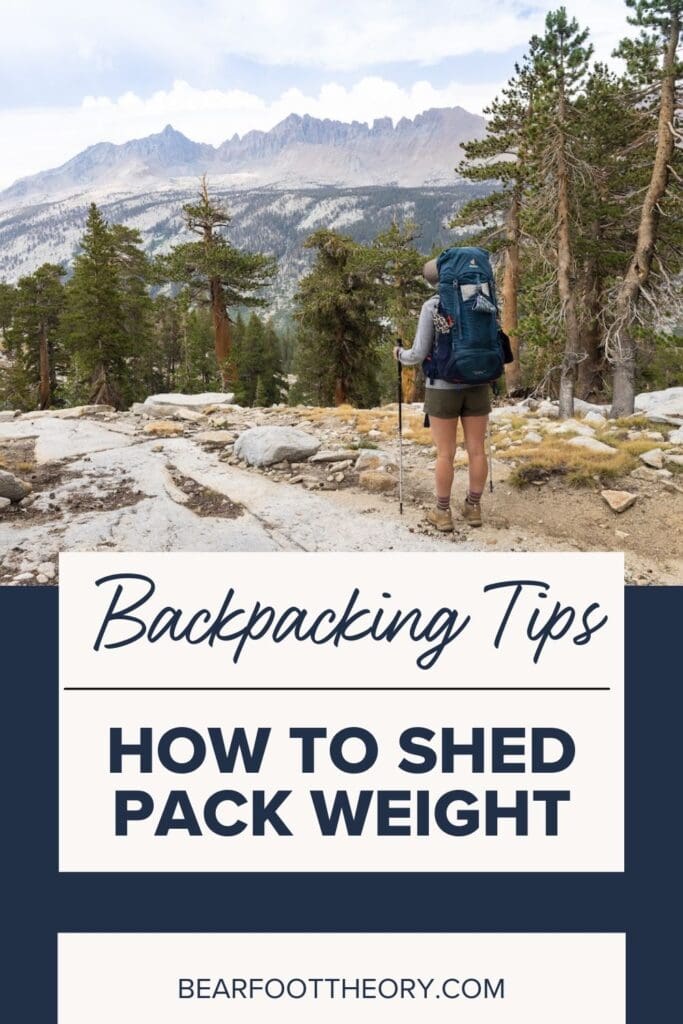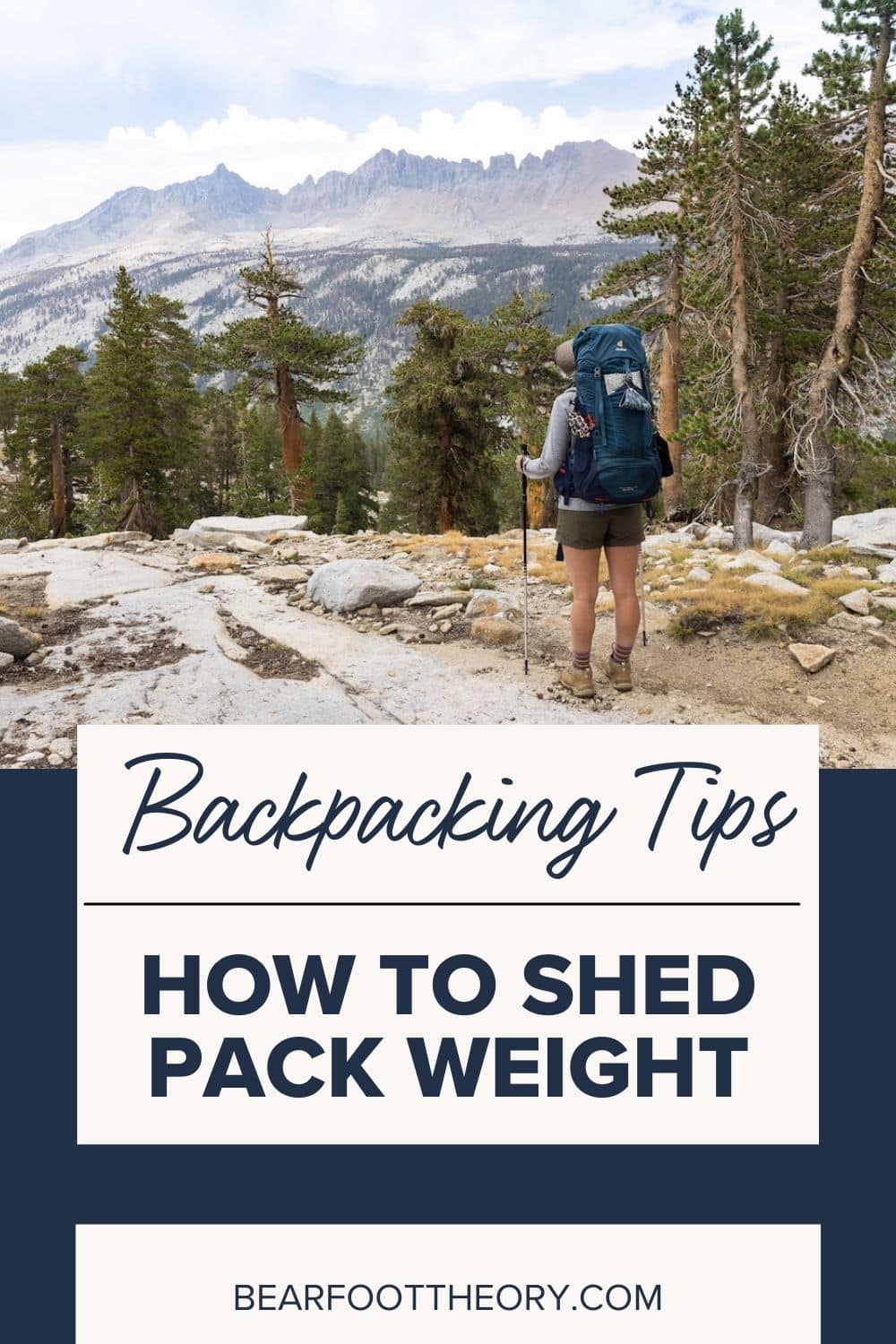Ultralight Backpacking Tips: 11 Practical Ways to Shave Weight
After one too many backpacking trips where my pack was way too heavy, I started finding ways to shed weight from my backpacking setup. Here’s 11 easy ways to reduce your load without having to cut the end of your toothbrush handle off.
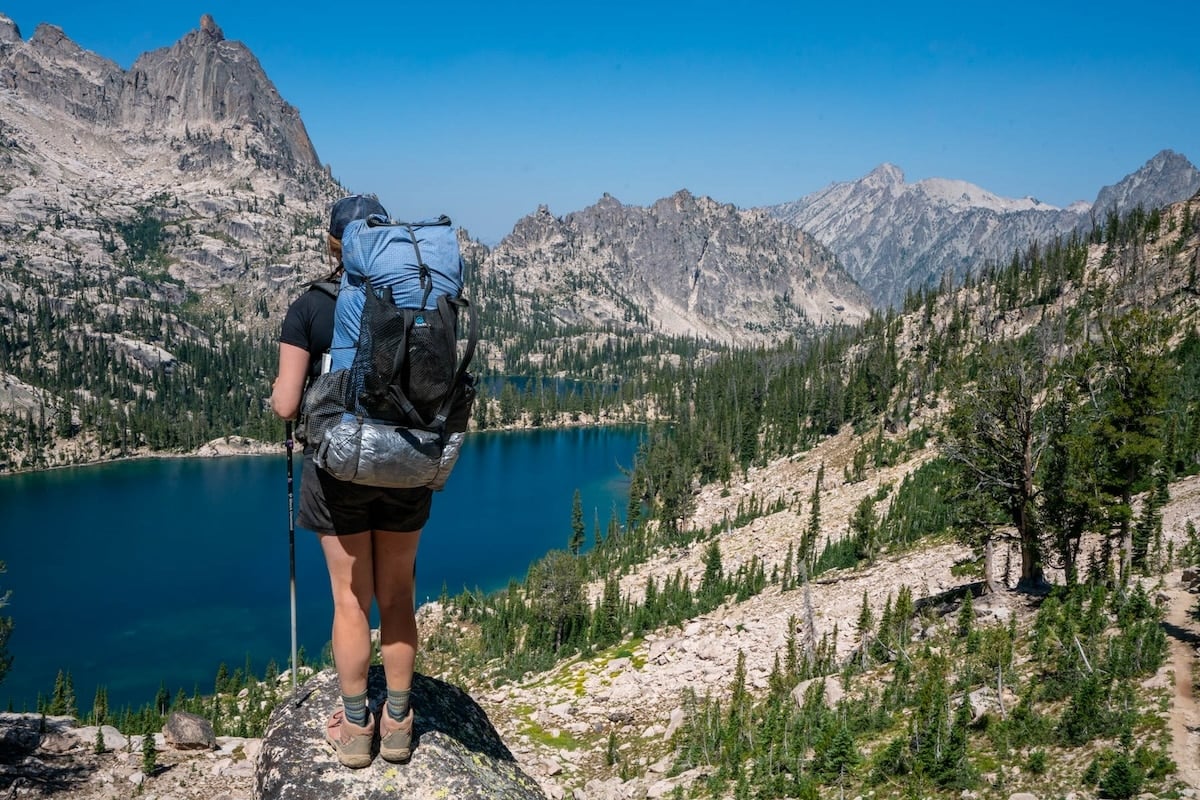
Ultralight backpacking doesn’t have to come at the cost of comfort and ease on the trail. With the advancement of gear technology over the past decade, shaving weight from your pack can be as simple as upgrading some of your heavy gear or doing research on water sources before you head out so you don’t need to carry a ton of extra water (which is heavy!).
I will be the first to admit, though, that cutting weight from my backpacking gear has been a challenge (especially with my camera equipment), and it’s something I’ll forever be trying to conquer. I’ll also preface this by saying that I’m not the type of person to cut the handle off of my toothbrush or forgo the stove and eat trail mix for dinner… although those things can save you weight too 🙂
These ultralight backpacking tips focus on easy, practical changes that the average backpacker can follow to shed weight while still being comfortable and having durable gear on the trail.
This post may contain affiliate links.
1. Focus on Items with Multiple Uses
Take a look at every item in your backpack and make sure you know how to maximize their uses. Many items you carry on backpacking trips can have more than one function, which allows you to reduce the amount of gear you really need. Here are some examples of multi-use backpacking gear.
When prepping for a trip, try to switch out super specific items with multi-purpose items wherever possible.
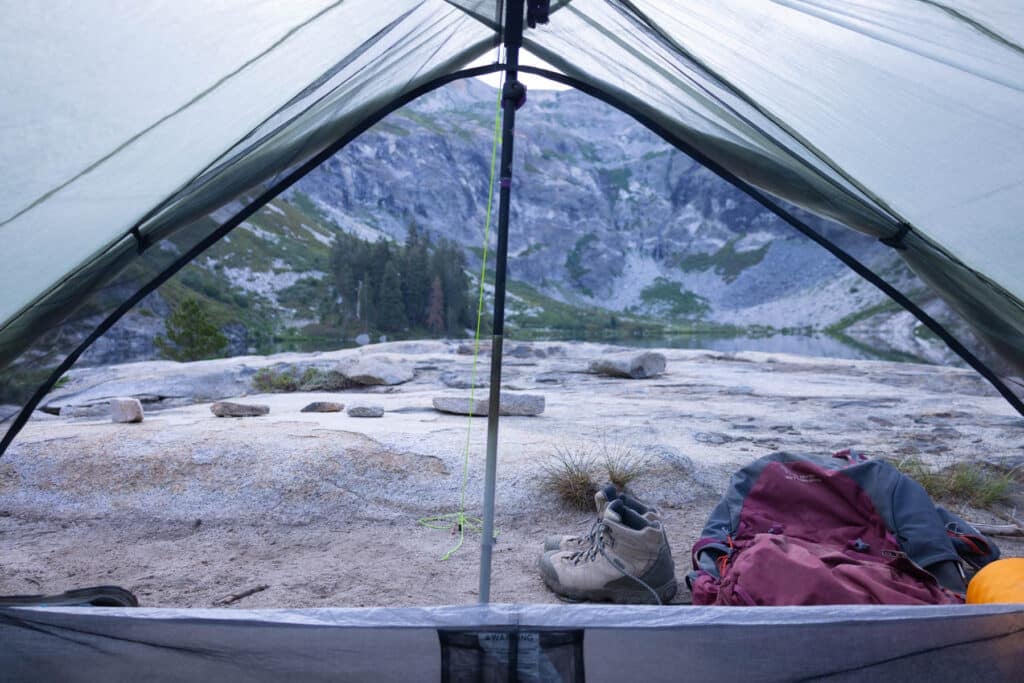
Save this post!
Enter your email & I'll send this post to your inbox! You'll also receive my weekly newsletter full of helpful advice for planning your adventures.
2. Shed Weight on the “Big Three”
Upgrading your heavy backpacking gear to ultralight gear can be expensive, but it’s worth doing piece by piece as you can afford. If you want to make small changes that will have big impacts on your pack weight, start with the big three. If you can get the total weight for these three items under 7-8 pounds, that’s an amazing start towards going ultralight.

3. Cut the Non-Essentials
Do you really need three heavy camera lens or bulky camp chair? Lay out all of your gear before packing it up and check to see if you can eliminate any items that are duplicates or unnecessary.
After each backpacking trip, create a list of everything in your pack that you didn’t use. If an item keeps reappearing on this list, cut it from your packing list. You can check out my 3-day backpacking packing checklist that has a PDF version you can download for easy reference.
With that being said, first aid and emergency equipment like a GPS satellite communicator are essential and an exception to this ‘cut it’ rule. You can, however, make sure that your first aid kit is not overkill. Learn more about building your backpacking first aid kit in this post.
4. Don’t Overpack
Overpacking clothes and toiletries is one of the most common beginner backpacking mistakes!
When packing your clothes for the backcountry, try to be minimal. Do you need a new outfit each day? Definitely not. For most backpacking trips, you only need one set of hiking clothes and one set of camp clothes, plus rain gear. Duplicates aren’t necessary unless you are hiking somewhere with extreme weather where you need a backup. You can also go on a week-long trip with just 2 pairs of socks.
For toiletries, don’t bring full-sized of anything. Also leave the big pack of baby wipes, deodorant, shampoo, and other toiletries at home. This will help keep your pack weight much lighter.
5. Think in Terms of Ounces
A classic backpacker saying is “Pay attention to the ounces, and the pounds take care of themselves.” — it’s all about ounces when it comes to ultralight backpacking tips. Don’t use averages or estimates – know the exact weight in ounces of every item in your pack, especially when you are purchasing new gear.
“About” 2 pounds doesn’t cut it. Is it really 2 pounds OR is it 2 pounds AND 5 ounces? If you want to get serious about ultralight backpacking, a bathroom or luggage scale will help you with weighing gear. Weigh everything in your pack and consider keeping a spreadsheet of every item you’re bringing and its weight. This will make it easier to determine what gear is worth swapping out for a lighter version.
An example where the ounces make a difference is if you’re going on a 1-2 night trip, a 3.5-ounce fuel canister is plenty big for boiling water or cooking simple meals. Bringing a bigger fuel canister might not seems like a big deal, but 5 extra ounces here and 5 extra ounces there, adds up quickly.
Other items that vary greatly in weight are your sleeping pad, camp sandals, cookware, clothing, and water filter. Seeing if you can swap heavy stuff for lighter alternatives can reduce your base weight significatly.
6. Choose Smart Materials
When choosing lightweight backpacking gear, take into consideration what material the gear is made from. For example, titanium is expensive, but it’s also lightweight and durable. Carbon fiber is lighter than aluminum, but it’s not as durable. Always think about the terrain and conditions you’ll be backpacking in to decide what kind of materials are best.
Another example is synthetic layers vs. cotton clothing. Synthetic is better for hiking because it’s generally lighter and dries quickly. This means that rather than bringing a bunch of extra clothing, you can rinse your shirt in a stream, hang it out an hour and it will be dry and ready for the next day.
Research the gear you are buying so you know if it’s both lightweight and made of an appropriate material for backpacking.
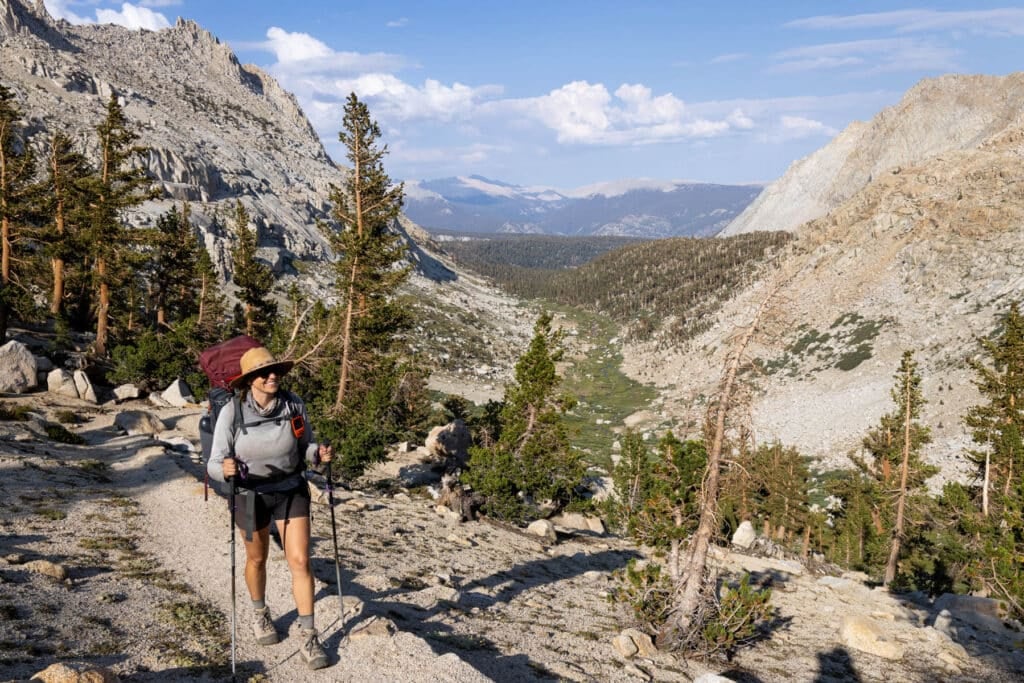
7. Get Organized
Keep a list of everything in your pack and its weight. I know this sounds a little intense, but when you see the numbers for how fast all your gear weight adds up, it helps you decide what to cut out. Lay everything out before it goes into your pack so you can see what you’ll be carrying.
If you have a pack with numerous pockets, have an organization system for what goes where. Being organized will help prevent you from bringing things you don’t need and throwing in extra items on your way out the door just because you have the room in your pack.
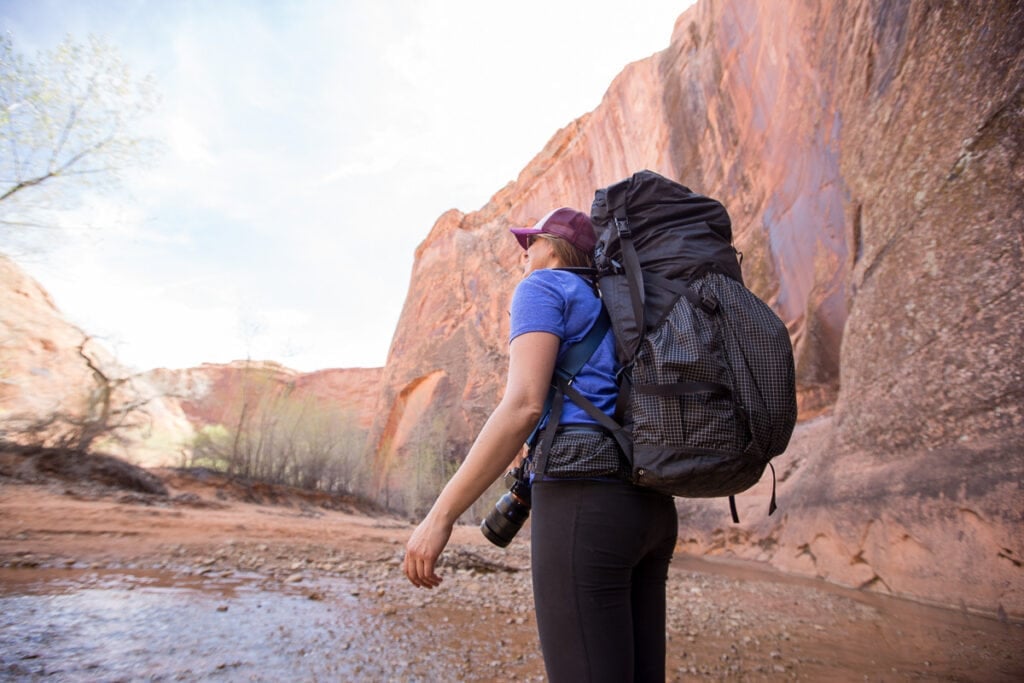
8. Don’t Carry More Water than You Need
Water is likely to be one of the heaviest things you’ll be carrying. To minimize how much water you need to carry, do your research before setting out to know where on the trail you can expect to find water and pack a lightweight water filter. Then, calculate how much water you need to carry to get you to the next water source.
Another good strategy for minimizing water weight is to carry multiple smaller bottles instead of one giant bottle so you can distribute the weight on either side of your pack.
Finally, don’t pack a stainless steel water bottle. Even plastic Nalgenes are quite heavy. I like these ultralight collapsible water bottles that get smaller as you drink. Smart water bottles (like Smart water from the gas station) are also a good choice since they are narrow, light, and can easily fit in the side pocket of your backpack.
Check water availability before you go!
It’s always a good idea to get updated trail information from the local ranger station or a recent trail report before heading out because you don’t want to find out that the creek you expected to be there is completely dried up.
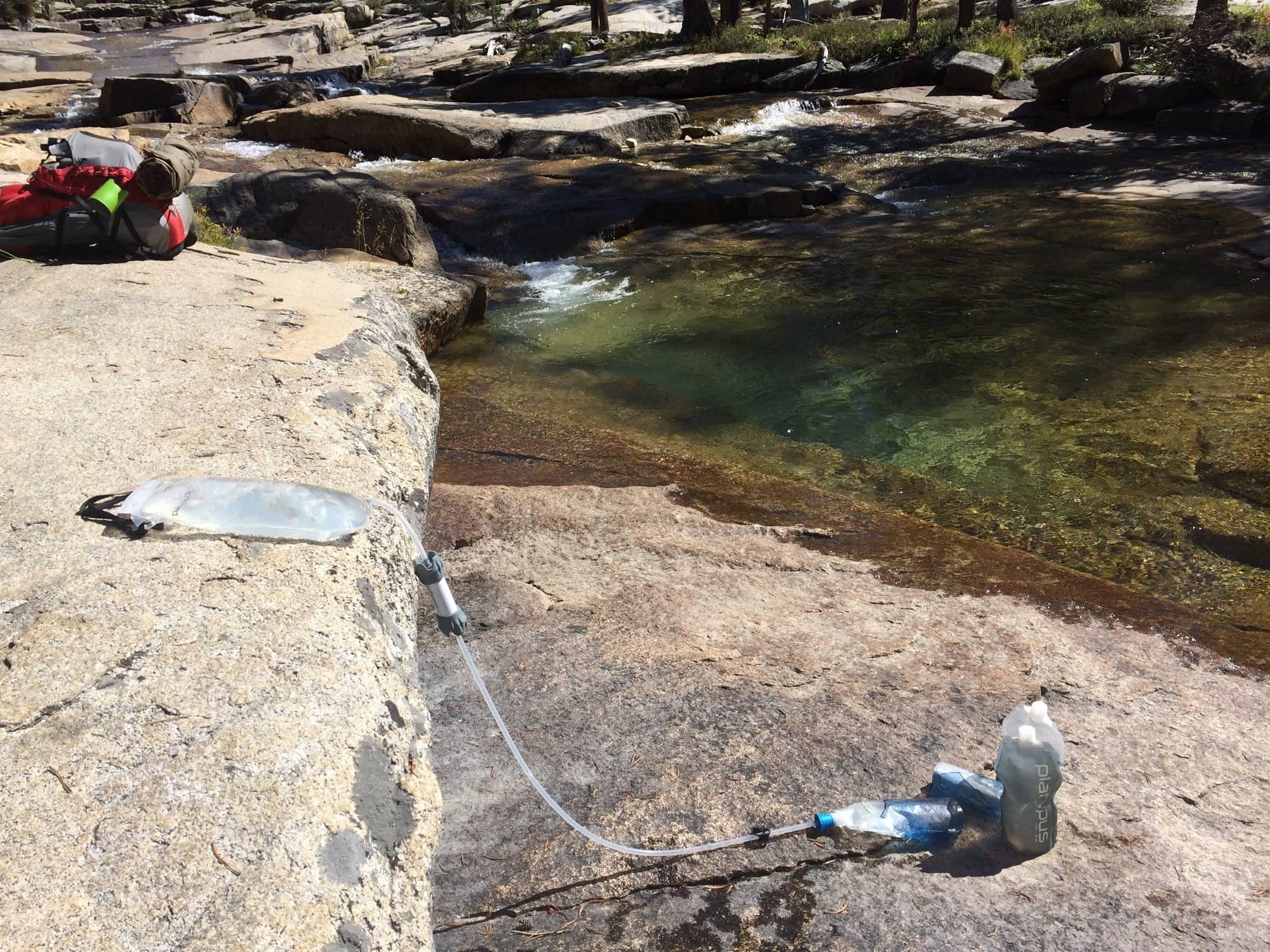
9. Get Healthy Before your Trip
People sometimes focus relentlessly on cutting ounce after ounce off of their packs, yet they don’t consider the weight they are already carrying on their body. Being fit and healthy before heading out on the trail will make your overall experience more enjoyable.
A backpacking trip is a great motivation for squeezing in some training hikes, doing at-home workouts, and eating healthy to ensure you’re fit for the trail.

10. Plan Your Food Strategically
Food weighs A LOT. Plus, it’s one of the easiest things to overpack. I can’t tell you how many times I’ve gone backpacking with wayyyyy too much food.
Before you head out on your trip, lay out your meals and snacks for each day of your trip. Make one pile for each day that includes breakfast, lunch, dinner, and snacks. This will help you visualize whether you are bringing too much or not enough. If you start with too much, you can then take away the heaviest of your food from your packing list.
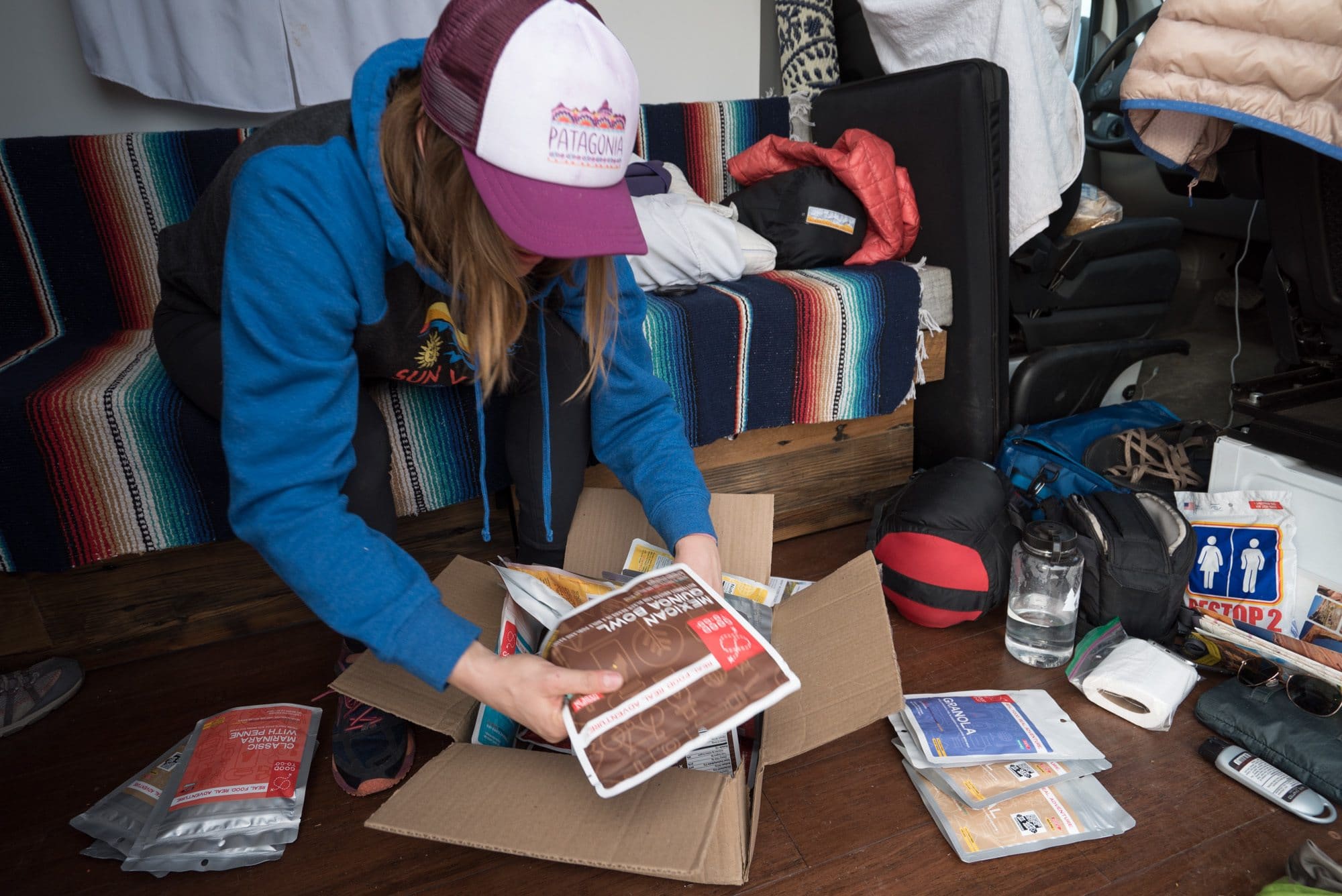
Also, take some time to research lightweight backpacking food options that are still high in calories and protein. While fresh fruit sounds great on the trail, you can pack twice as much dried fruit in the same space, for less weight, and then you don’t have to pack out food waste (such as orange peels and apple cores).
While eating fresh is always preferred at home, when I’m on the trail, I opt for dehydrated backpacker meals. They take up so little room in your pack, weigh less than anything you might cook from scratch, and the convenience makes them all the more satisfying. Plus they pack in a lot of calories.
The goal is to choose calorie-dense foods that offer the most nutrition in the smallest package.
Dehydrated backpacker meals can be expensive, but when you compare all of the ingredients you have to buy if you want to cook from scratch, plus the hassle of doing dishes, it makes it worth it to me. You can reduce your food weight further by removing any unnecessary packaging and repackaing backpacker meals into ziplock freezer bags which you can pour boiling water into.
If you’re super serious about going ultralight and are only going out for a night or two, you can also consider ditching the stove and fuel and eating snacks for all of your meals, which will save you a pound or two.
11. Keep Learning
Hikers and outdoor brands are always coming up with new ways to cut weight when backpacking, so set a goal to learn something new with every hike you take. Look for additional resources and articles and talk to others on the trail to learn their tips and tricks for keeping weight low. Your expertise will continue to grow and your pack weight will reduce with each backpacking trip you take!
And remember…. it’s not a competition. When I was on the John Muir Trail, I heard people constantly comparing their pack weights which drove me nuts. It’s not about who has the lightest pack. It’s about finding the sweet spot between being comfortable while you’re hiking and being comfortable at camp.
Everyone has a different threshold and the more you backpack, the more you’ll learn about what YOU do and don’t need to have an enjoyable hike.
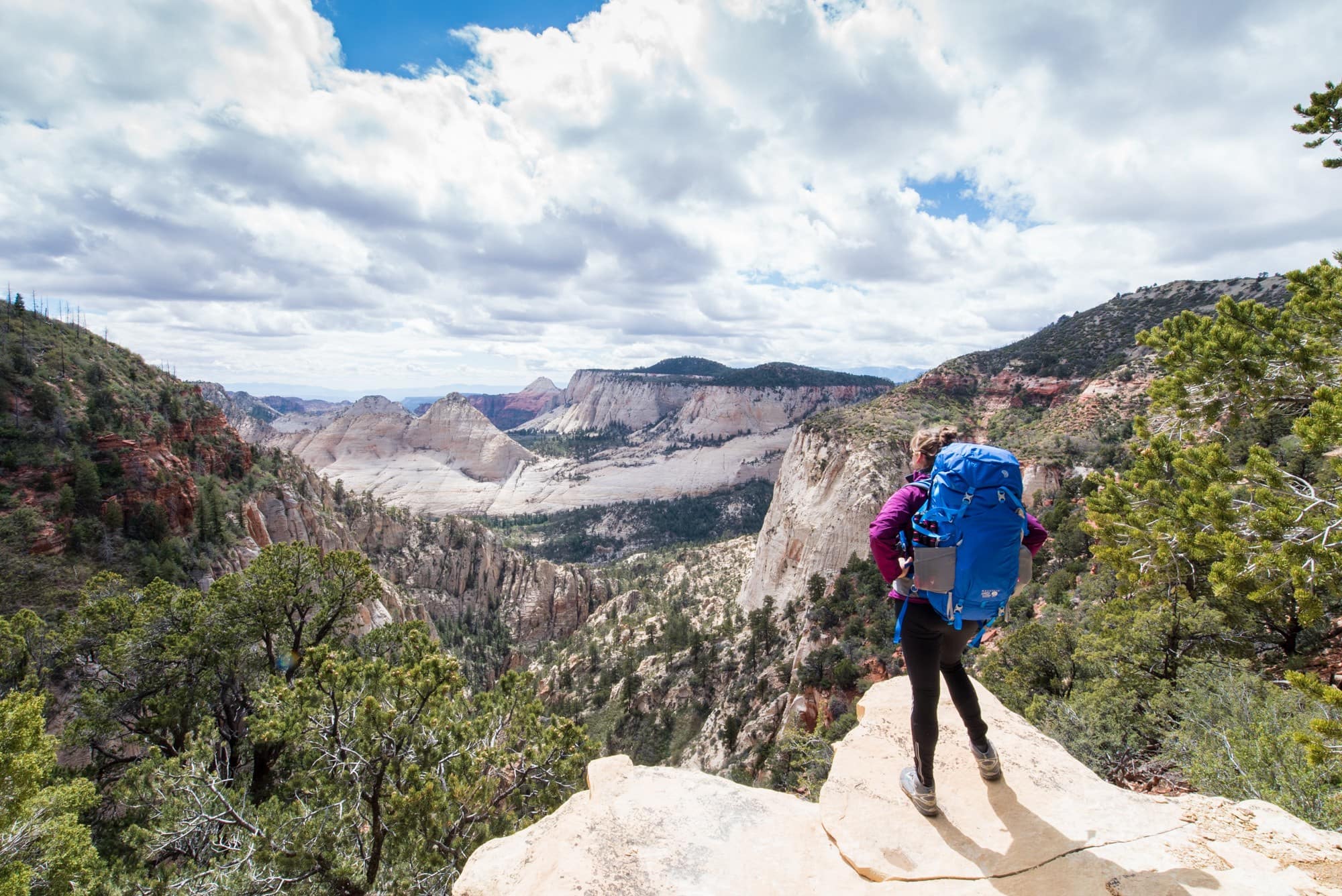
Frequently Asked Questions
Your backpacking base weight is the total weight of your backpack and everything inside of it, minus food and water.
The general consensus is that “ultralight” backpacking is when your base weight is under 10 pounds. This is much easier to accomplish when you are backpacking with another person, and you are able to split up the group gear. However, I’d say a base weight under 15 pounds, and you’re doing pretty good!
Even if you can’t get your base weight under 10 pounds, any unnecessary weight you can cut from your backpacking pack will lead to greater enjoyment while you’re hiking. However, you don’t want to leave important things at home that will greatly reduce your comfort at camp. If you can’t sleep because your ultralight sleeping pad it uncomfortable, then that will not feel worth it. You have to find the right balance between having the gear you need to be comfortable and safe while hiking and at camp.

